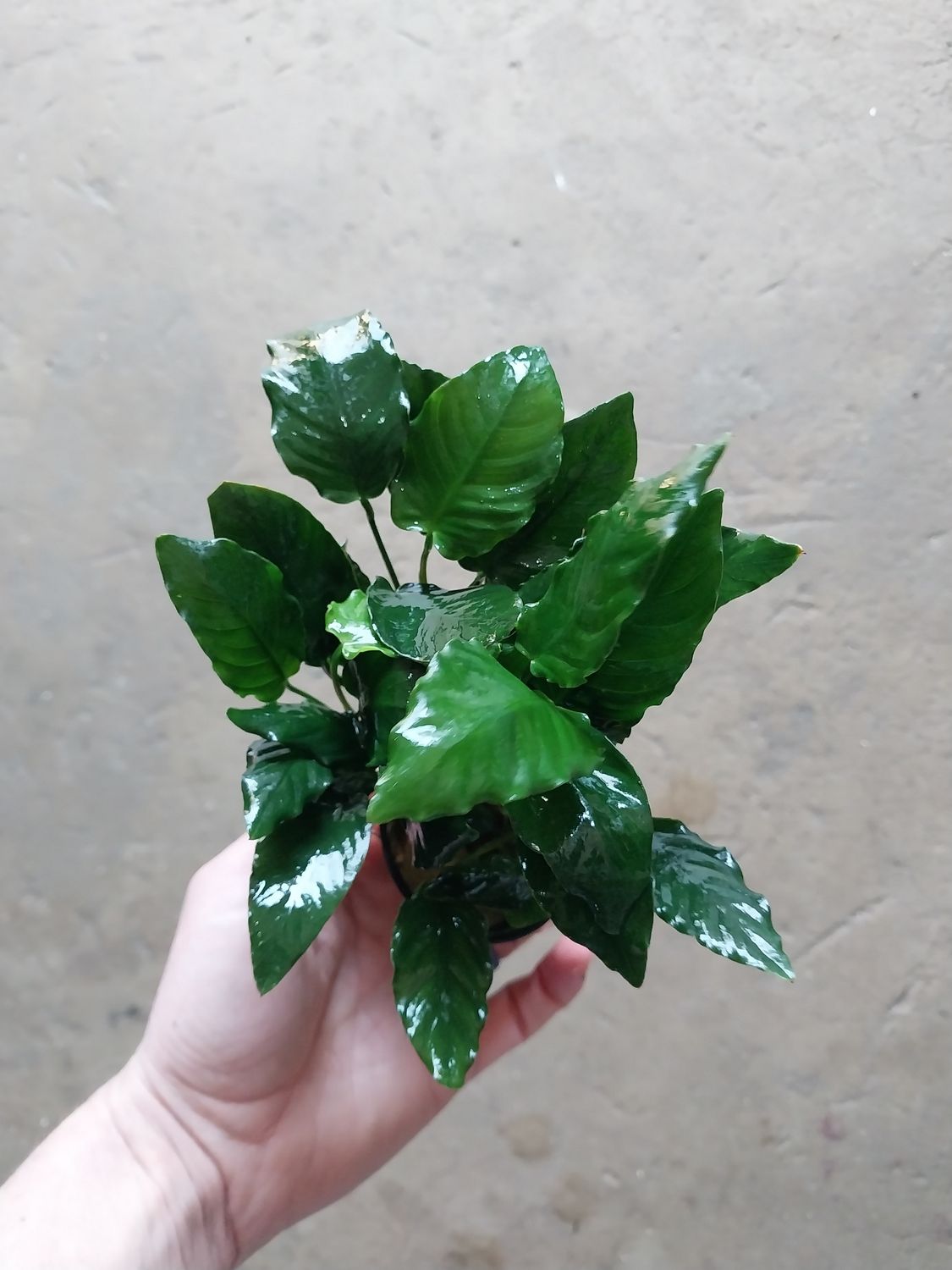Anubias sp. ‘KingKong’
Anubias sp. ‘KingKong’ – KingKong Anubias
Anubias sp. ‘KingKong’ is a striking, robust cultivar of Anubias, recognized for its extra-large, thick, and dark green leaves that make a bold statement in aquascapes. Perfect for midground or background placement, it’s ideal for aquarists looking for a hardy plant that creates a strong visual focal point. Its durable nature and slow growth make it perfect for beginners and low-maintenance tanks.
Care Tips for Anubias sp. ‘KingKong’:
Light Requirements:
-
Prefers low to moderate light. It tolerates low-tech conditions but should avoid intense, direct lighting to prevent algae buildup on its large leaves.
Water Parameters:
-
Temperature: 72–82°F (22–28°C)
-
pH: 6.0–7.5
-
Hardness: Soft to moderately hard water; very adaptable
Substrate & Planting:
-
Best attached to rocks or driftwood. Avoid burying the rhizome in substrate to prevent rotting.
Growth Rate:
-
Slow-growing; requires minimal maintenance. Its large leaves provide a substantial presence without overwhelming the aquarium.
Pruning:
-
Remove damaged or yellowing leaves to maintain plant health. Always avoid cutting the rhizome or roots.
Fertilization:
-
Occasional gentle dosing of liquid fertilizers can promote healthy leaves, but heavy fertilization isn’t necessary.
Positioning in the Tank:
-
Midground or Background: Its large leaves create a bold focal point, adding depth and contrast in larger aquascapes.
Interesting Facts:
-
Extra-Large Leaves: True to its name, KingKong Anubias has significantly larger leaves than typical Anubias nana or Stardust varieties, making it a striking centerpiece.
-
Tough and Resilient: Extremely hardy, tolerating a wide range of water parameters, temperature fluctuations, and light conditions.
-
Slow Growth, Long Lifespan: Its slow growth reduces maintenance, and it can live for many years, making it a lasting addition to any aquarium.
-
Low-Tech Friendly: Thrives even without CO₂ or high-intensity lighting, making it beginner-friendly.
Fun Fact: KingKong’s oversized, dark green leaves contrast beautifully with smaller, lighter plants, adding dramatic texture and depth to aquascapes. It’s a perfect plant for aquarists who want a strong visual statement without demanding high-tech care.

